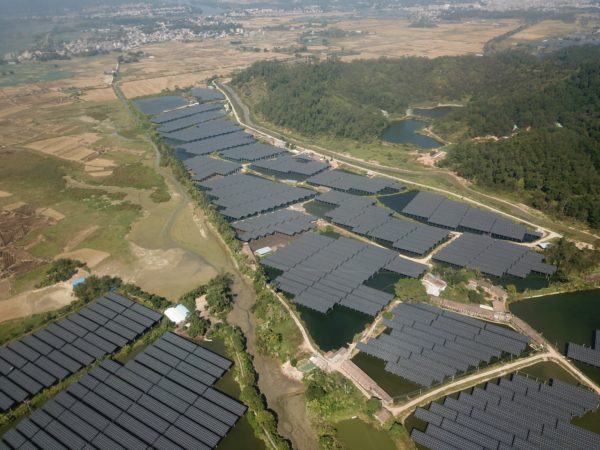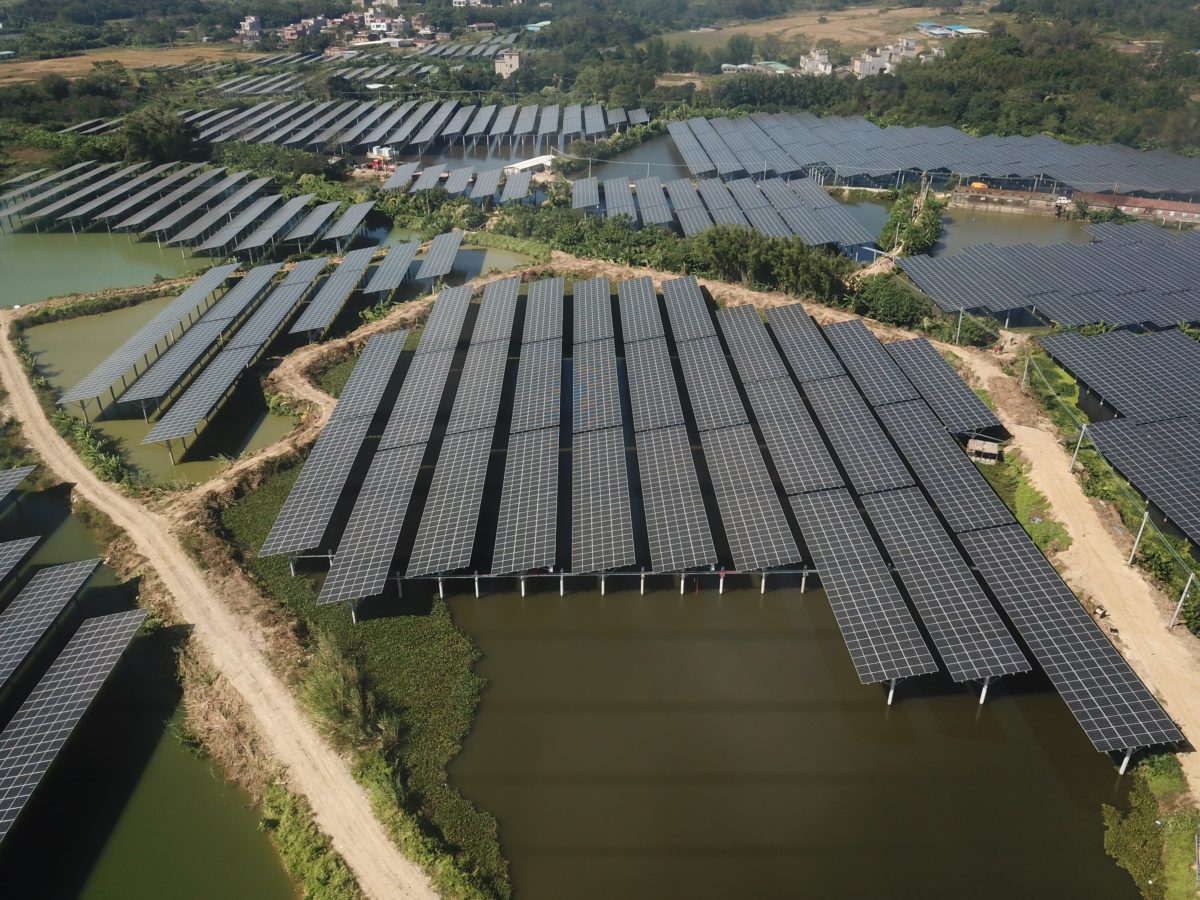Chinese panel maker Jetion Solar has announced it has supplied about 300,000 modules for a 120MW PV project combining PV power generation and fish farming in China's Guandong province.
“There are about 823 acres of fish ponds in Gangmei Town, where the solar park is located,” a spokesperson from the company told pv magazine. “The project is covering a 380-acre fish pond.”
The plant is owned and operated by China's largest energy company, the State Power Investment Corporation (SPIC). Sungrow Renewables Development Co Ltd constructed the facility, acting as an EPC contractor.
The solar park is currently selling power to State Grid Corporation of China, which is China’s largest state-owned grid operator and power utility, at a price of RMB0.453/kWh ($0.0762). “The project's levelized cost of energy is RMB0.14/kWh ($0.022) and total investment in the project was about RMB600 million ($94.9 million),” Jetion's spokesperson added.

Image: Jetion Solar
The solar manufacturer provided its 21.2%-efficient JT SSh(B) 450W/455W high-efficiency dual-glass panels for the project.
“The double-sided design can achieve higher power generation gain and the dual-glass design can bring better weather resistance and low attenuation,” Jetion said in a statement. “Compared with traditional modules, Jetion Solar dual-glass modules have extremely low water permeability, and do not need to consider the problem of water vapor entering the modules to induce hydrolysis of [the] EVA film, effectively adapting to the water surface or high humidity environment and at the same time reducing the post-project operation and maintenance costs, creating higher benefits for customers.”
The company added it will keep supplying its products for other unspecified projects in the area, for a total capacity of around 670MW.
This content is protected by copyright and may not be reused. If you want to cooperate with us and would like to reuse some of our content, please contact: editors@pv-magazine.com.




What is the reason for the big difference between the LCOE and the offtake price?
As usual with these they probably didn’t take into account any construction or installation or maintanence costs for the lcoe calc.
Note the article doesn’t show how much kWh these panels produced over a year.
Whereas Peak power in MW is a really useless measure people throw around – as you can expect to get 70 percent of that for couple hours in a day when the earth is in the right spot once a year and the clouds are generous.
Its normal phenomenon in China special for Guangdong Provice as the highest to RMB0.453/kWh ($0.0762) , Also its bifacial that which can increase revenue from back side of module , Likewise I think its exclude the cost of O&M in coming 25 years .
Annual production over time is very predictable. At that latitude, >5hrs/day is certain. O&M for bifacial in those conditions looks well accounted for as well. Assuming a low cost of land, materials, development, labor, and a 30-40yr system life, their LCOE prediction is reasonable. Goodbye fossil fuels!
What happened to fishes?